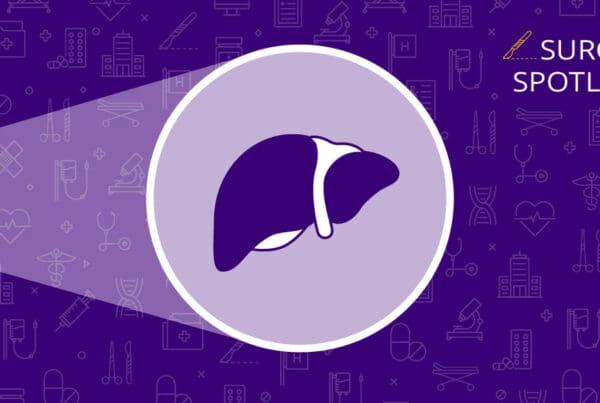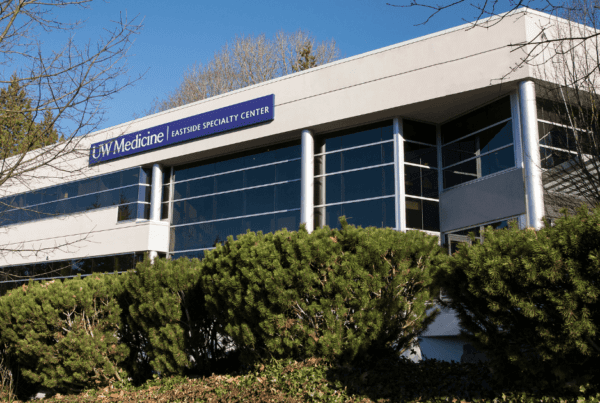HIGHLIGHTS | Coordinating medical response during COVID-19
- Harborview is King County’s Disaster Medical Coordination Center (DMCC).
- The Regional COVID-19 Coordinating Center (RC3) is a long-term version of the DMCC.
- The RC3 coordinates care across hospitals to ensure no hospital is overburdened.
- It also provides resources to long-term care facilities, homeless shelters and jails.
In the case of a major emergency, Harborview Medical Center plays a key role in coordinating patient movement across local hospitals.
“Harborview is King County’s Disaster Medical Coordination Center (DMCC), which means we coordinate medical response during mass casualty incidents, such as the Ride the Ducks crash or large-scale events such as earthquakes or mass shootings,” explains Mark Taylor, RN, director of Trauma and Emergency Preparedness at Harborview Medical Center. “We send patients to hospitals around the community to ensure everyone has timely access to care and that no single hospital is overburdened or receives a patient it is not equipped to handle.”
The COVID-19 pandemic is no exception.
Responding to COVID-19
The DMCC typically functions on an incident-by-incident basis that is put into action during large-scale incidents or natural disasters.
But when a cluster of COVID-19 cases popped up at a long-term care facility in Kirkland in late February, Harborview Medical Center quickly recognized the need for a centralized system like the DMCC to place patients in hospitals across Western Washington.
“Evergreen Hospital received a large number of patients in a short period of time from the Life Care Center of Kirkland,” says Steve Mitchell, MD, medical director of the Emergency Department at Harborview. “Over a 10-day period before an evacuation took place, there were 37 patients who left Life Care bound for local hospitals. Thirty-three of them went to Evergreen. Unfortunately, Evergreen’s critical care resources were completely consumed, which was needless because there was plenty of regional capacity across the healthcare system.”
So, the DMCC helped disperse patients at hospitals across King, Pierce and Snohomish counties.
“Our response to this event prompted the need for a regional resource center to coordinate this for days and months to come,” says Taylor.
Creating the Regional COVID-19 Coordinating Center
Taylor and Mitchell built a long-term version of the DMCC and coined it the Regional COVID-19 Coordinating Center (RC3). The RC3 is different from the DMCC in that it is staffed 24/7 with a critical care nurse and an on-call physician. It has the capability of placing people in medical facilities over the course of months.
“We are using the same foundational concepts as the DMCC,” says Mitchell. “But we are applying it to this specific situation and extending it over a longer period of time.”
The dedicated staff answer incoming calls and identify where a patient should be sent based on a hospital’s capacity and capability of caring for that patient.
Supporting shelters, jails and nursing homes
In addition to coordinating across hospitals in the region, the RC3 provides support to various facilities where people are living in close proximity, such as homeless shelters, jails and nursing homes.
“We really want to extend the RC3 to congregant settings,” says Mitchell. “We are coordinating with our shelters and jails so that if there’s an outbreak, we will be prepared. The whole guiding premise is that we have a way of distributing patients so that not any one facility, whether it be a long-term care facility or a healthcare facility, is overwhelmed.”
Long-term care facilities have been hit hard by the COVID-19 pandemic, with more than one out of five facilities in Washington reporting confirmed cases of the disease. The RC3 has been — and continues to be — a key resource for these places.
“One thing that we now know is a significant issue in this pandemic is that within long-term care facilities, healthcare workers are being disproportionately impacted as compared to other healthcare settings,” says Mitchell. “If a nursing home loses 30% of their staff because they become symptomatic, it’s suddenly not safe for the existing residents to remain. They need caregivers in order to safely function.”
The RC3 keeps an eye on the number of outbreaks across each long-term care facility and works with Harborview’s post-acute care team to proactively provide resources such as testing. This keeps facilities from getting to a point where they need to move out patients because they don’t have the staff to care for them.
“A big part of our role is surveillance,” says Mitchell. “We’ve developed tools using data from Public Health – Seattle & King County and King County Emergency Medical Services to help us identify when a facility is having difficulties. Hopefully, we can intervene and offer help early on.”
Running the RC3 today — and in the future
Data collected by the Institute for Health Metrics and Evaluation suggests that Washington state has already passed its COVID-19 peak hospital resource use and is starting to flatten the curve, but Taylor anticipates the RC3 will continue to receive a steady stream of calls for at least a month.
“We’re seeing pockets of ongoing outbreaks occurring at places like skilled nursing facilities,” says Taylor. “These facilities have patients that are getting sicker and will need to be moved to a hospital. The overall number of new cases per day is beginning to decline, but we are still seeing individual facilities becoming overburdened.”
The work that Taylor and Mitchell are doing to support these facilities throughout the COVID-19 pandemic will only further sharpen Harborview’s response to emergencies in the future.
“We’ve never done this exact process before at Harborview,” says Taylor. “But it’s likely we’ll need this in the future, and now we’ll know how to do it.”


